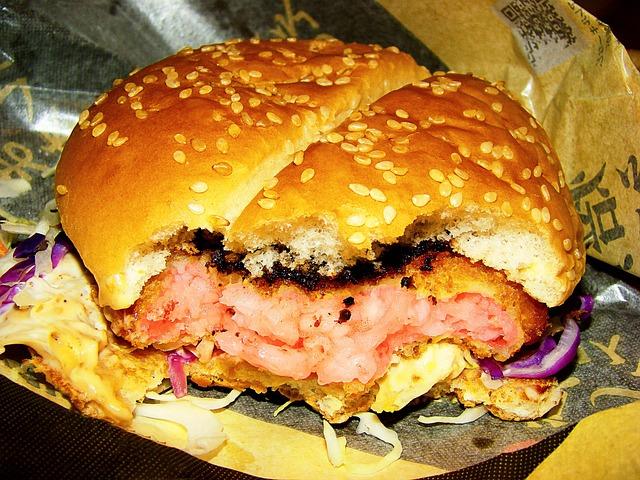Once, a devoted dog owner named Sarah believed that dry food was the ultimate solution for her golden retriever, Max. She loved the convenience and the promise of balanced nutrition. However, after a few months, Max became lethargic and lost his shiny coat. Concerned, Sarah consulted her vet, who explained that while dry food can provide essential nutrients, it lacks moisture and variety. Dogs thrive on a balanced diet, including wet food and fresh ingredients. Sarah adjusted Max’s meals, and soon, his energy and vitality returned. Remember, a happy dog is a healthy dog!
Contents
- Understanding the Nutritional Needs of Dogs for Optimal Health
- Evaluating the Benefits and Drawbacks of Dry Dog Food
- Ensuring a Balanced Diet: Key Ingredients to Look For
- Practical Tips for Transitioning Your Dog to a Dry Food Diet
- Q&A
Understanding the Nutritional Needs of Dogs for Optimal Health
When considering a dog’s diet, it’s essential to recognize that their nutritional needs are complex and multifaceted. Dogs require a balanced intake of proteins, fats, carbohydrates, vitamins, and minerals to thrive. While dry food can provide a convenient and shelf-stable option, it may not always meet the complete nutritional profile that your furry friend needs for optimal health. Understanding these requirements is crucial for making informed decisions about your dog’s diet.
**Proteins** are the building blocks of a dog’s body, playing a vital role in muscle development, immune function, and overall health. High-quality protein sources, such as chicken, beef, or fish, should be prioritized in their diet. While many dry foods contain protein, the source and quality can vary significantly. It’s important to choose a brand that lists a specific meat as the first ingredient, ensuring your dog receives adequate protein for their needs.
In addition to proteins, **fats** are essential for energy and the absorption of fat-soluble vitamins. Omega-3 and Omega-6 fatty acids contribute to a healthy coat and skin, as well as support cognitive function. Many dry foods include fats, but the type and balance of these fats can differ. Look for products that incorporate healthy fat sources, such as fish oil or flaxseed, to ensure your dog benefits from these vital nutrients.
Lastly, **vitamins and minerals** play a crucial role in maintaining your dog’s overall health. A well-rounded diet should include a variety of fruits and vegetables, which provide antioxidants and essential nutrients. While some dry foods are fortified with vitamins and minerals, they may not offer the same benefits as fresh, whole food sources. Incorporating a mix of wet food or fresh ingredients can enhance your dog’s diet, ensuring they receive a comprehensive range of nutrients necessary for long-term health and vitality.
Evaluating the Benefits and Drawbacks of Dry Dog Food
When considering a diet exclusively based on dry dog food, it’s essential to weigh the potential benefits. One of the most significant advantages is **convenience**. Dry kibble is easy to store, measure, and serve, making it a practical choice for busy pet owners. Additionally, it has a long shelf life, reducing the frequency of shopping trips and minimizing food waste. This ease of use can lead to a more consistent feeding routine, which is beneficial for a dog’s overall health.
Another notable benefit is the **nutritional balance** that many high-quality dry dog foods offer. Most commercial brands are formulated to meet the nutritional guidelines set by veterinary associations, ensuring that dogs receive essential vitamins, minerals, and proteins. This balanced diet can support a dog’s energy levels, promote healthy skin and coat, and maintain optimal weight. Furthermore, the crunchy texture of kibble can aid in **dental health** by reducing plaque and tartar buildup, contributing to better oral hygiene.
However, there are also drawbacks to relying solely on dry food. One concern is **hydration**; dry kibble contains minimal moisture, which may not provide sufficient hydration for some dogs, especially those who are less inclined to drink water. This can lead to urinary issues or kidney problems over time. Additionally, some dogs may find dry food less palatable, leading to decreased appetite or reluctance to eat, which can affect their overall health and well-being.
Moreover, not all dry dog foods are created equal. Many lower-quality brands may contain **fillers** and artificial additives that do not contribute to a dog’s nutritional needs. This can result in a lack of essential nutrients and may lead to health issues in the long run. Pet owners must be diligent in selecting high-quality products and may need to consult with a veterinarian to ensure that their dog’s dietary needs are being met adequately. Balancing the pros and cons is crucial for making an informed decision about a dog’s diet.
Ensuring a Balanced Diet: Key Ingredients to Look For
When considering your dog’s diet, it’s essential to focus on the right ingredients that contribute to their overall health and well-being. A balanced diet should include a variety of nutrients that support different bodily functions. Look for high-quality protein sources, such as **chicken, beef, or fish**, which are crucial for muscle development and energy. These proteins should ideally be listed as the first ingredient on the packaging, ensuring that your dog receives the necessary amino acids for optimal health.
In addition to protein, healthy fats play a vital role in your dog’s diet. Ingredients like **fish oil or chicken fat** provide essential fatty acids, which are important for maintaining a shiny coat and healthy skin. Omega-3 and Omega-6 fatty acids also support brain function and can help reduce inflammation. Including these fats in your dog’s diet can significantly enhance their overall vitality and longevity.
Don’t overlook the importance of carbohydrates and fiber in your dog’s meals. Ingredients such as **sweet potatoes, brown rice, and peas** offer a great source of energy while also aiding in digestion. Fiber is essential for maintaining a healthy gut, preventing constipation, and promoting a feeling of fullness. A balanced diet should incorporate these ingredients to ensure your dog receives the necessary nutrients without excessive fillers that can lead to weight gain.
Lastly, vitamins and minerals are crucial for your dog’s immune system and overall health. Look for foods that include **fruits and vegetables** like blueberries, carrots, and spinach, which are rich in antioxidants and essential nutrients. These ingredients not only enhance the nutritional profile of your dog’s diet but also provide a variety of flavors and textures that can make mealtime more enjoyable. By prioritizing these key ingredients, you can ensure that your dog thrives on a diet that meets all their nutritional needs.
Practical Tips for Transitioning Your Dog to a Dry Food Diet
Transitioning your dog to a dry food diet can be a smooth process with the right approach. Start by selecting a high-quality dry food that meets your dog’s nutritional needs. Look for options that list real meat as the first ingredient and avoid fillers like corn and soy. **Consult your veterinarian** to ensure the chosen food aligns with your dog’s health requirements, age, and activity level.
Begin the transition gradually to minimize digestive upset. For the first few days, mix a small amount of dry food with your dog’s current diet. **Increase the proportion of dry food** over the course of a week or two, monitoring your dog’s response. A typical schedule might involve starting with 25% dry food and 75% wet food, then adjusting to 50/50, and eventually reaching 100% dry food. This gradual change helps your dog’s digestive system adapt.
During this transition, pay attention to your dog’s behavior and health. **Watch for signs of discomfort** such as vomiting, diarrhea, or a lack of interest in food. If any issues arise, slow down the transition process or consult your veterinarian for advice. It’s essential to ensure your dog is comfortable and happy with the new diet, as a positive experience will encourage them to embrace the change.
enhance your dog’s dry food experience by incorporating water or low-sodium broth to make it more appealing. **Consider using puzzle feeders** or interactive toys to stimulate your dog mentally and physically while they eat. This not only makes mealtime more enjoyable but also promotes healthy eating habits. With patience and care, your dog can thrive on a dry food diet, enjoying the benefits of balanced nutrition.
Q&A
-
Can dogs thrive on dry food alone?
Yes, dogs can thrive on a high-quality dry food diet. Many commercial dry dog foods are formulated to meet all the nutritional needs of dogs, providing essential vitamins, minerals, and proteins. However, it’s crucial to choose a reputable brand that adheres to AAFCO guidelines.
-
Will my dog get bored with only dry food?
While some dogs may prefer variety, many adapt well to a consistent diet of dry food. To keep mealtime interesting, consider rotating between different flavors or brands of dry food, or adding occasional wet food or safe human food as a topper.
-
Is dry food sufficient for hydration?
Dry food does not provide the same hydration as wet food. Ensure your dog has constant access to fresh water to maintain proper hydration. If your dog is particularly active or lives in a hot climate, monitor their water intake closely.
-
Are there any health risks associated with a dry food-only diet?
While a dry food diet can be healthy, some dogs may develop dental issues if they don’t chew their food properly. Regular dental check-ups and providing dental chews can help mitigate this risk. Always consult your veterinarian to tailor a diet that suits your dog’s specific health needs.
while dry food can provide essential nutrients for dogs, a balanced diet that includes wet food or fresh ingredients may enhance their overall health and well-being. Prioritize your dog’s nutrition for a happier, healthier life.

大家好,我是彼得潘,專業的手法身體治療師。我喜歡探索和研究各種主題,並透過與人工智慧的合作分享專業、實用、有趣的文章。我們定期進行人工審核,以確保內容的準確性。如果您發現文章中有任何不準確的地方,請隨時與我們聯繫,我們會及時糾正。您可以透過 [email protected] 與我們聯繫。



